How Long Does it Take to Get an Online PALS Certification?
How Long Does it Take to Get an Online PALS Certification?

by Greta Kviklyte
Life Saver, AMC
Co-authored by Kim Murray, RN, M.S.
posted on Aug 18, 2025, at 8:00 am
Pediatric Advanced Life Support (PALS) certification trains healthcare professionals to recognize and respond to life-threatening emergencies in infants and children.
Understanding your PALS certification timeline is crucial for healthcare providers, as many healthcare facilities require proof of PALS certification before you can work with pediatric patients or in emergency care settings. Allowing your certification to lapse could limit your ability to work shifts, delay job opportunities, or temporarily remove you from clinical duties. By planning ahead, you avoid last-minute course registration, reduce stress, and ensure you’re always prepared to deliver life-saving pediatric care using the most current, evidence-based practices.
We offer Online ACLS Certification and Renewal
How Long Does It Take to Get PALS Certified?
The time it takes to earn your PALS certification depends on the format you choose and whether it’s your first time certifying or you’re renewing.
In-Person Courses
Attendees spend two full days in a classroom environment led by certified instructors. The experience typically begins with lectures that cover core pediatric emergency concepts and treatment algorithms. Students practice skills in small groups, using manikins and clinical equipment to simulate real-life scenarios like respiratory failure, shock, or cardiac arrest. The course concludes with a written exam and skills assessment, ensuring every participant can demonstrate key interventions such as high-quality CPR, airway management, and defibrillation.
 Hybrid Courses
Hybrid Courses
A hybrid format blends the flexibility of online learning with hands-on experience. Participants first complete self-paced online modules, which may include instructional videos, interactive case studies, and quizzes to ensure mastery of core concepts. Afterward, they attend a shorter in-person session focused solely on practicing and demonstrating critical skills. This session, which is often half a day, provides learners with the opportunity to run through simulated pediatric emergencies, receive direct coaching, and complete their skills assessment.
Online PALS Courses (AMC)
AMC’s fully online PALS course is designed for busy healthcare professionals who require a fast and flexible solution. Students complete all training from their own device, at their own pace. The course includes step-by-step video demonstrations, audio learning options, and interactive quizzes to reinforce knowledge. There is no in-person component required, and optional skills checklists and webinars are available for those who want additional practice. This format allows participants to earn nationally accepted certification in as little as an hour, without disrupting work schedules or requiring travel.
Here’s a quick breakdown of the time commitment for each format:
| Certification Format | Initial Certification Timeframe | Renewal Timeframe | Key Advantages |
|---|---|---|---|
| In-person | 12-16 hours (typically 2 days) | 6-8 hours |
|
| Hybrid | 6-8 hours total | 4-6 hours |
|
| Online | Less than 1 hour | 1-2 hours |
|
PALS Recertification Course Timeline
Renewal courses are typically shorter than initial certification. AMC’s online PALS recertification course can be completed in as little as one to two hours, depending on your familiarity with the material, and your digital certificate is issued immediately upon passing.
How to Get Pediatric Advanced Life Support Certified?
Getting PALS certified is straightforward when you know the steps. Here’s how to do it:
Step 1: Get Your Prerequisites
Most PALS courses require a valid Basic Life Support (BLS) certification and a solid understanding of CPR, especially for infants and children. These foundational skills ensure you’re ready to build on advanced pediatric life support techniques.
Step 2: Complete a Certified PALS Course
Choose a program that meets industry standards, such as AMC’s online PALS certification course. These courses provide all the essential learning materials, such as videos, audiobooks, and skill demonstrations so you can train at your own pace and on your schedule.
Step 3: Pass the Final Exam and Get Certified
After completing your training, pass the PALS exam to confirm you’ve gained the adequate knowledge and skills. AMC sends your digital certification card instantly and mails your provider card (if requested).
What to Expect in a PALS Class
A Pediatric Advanced Life Support course is designed to give healthcare professionals the skills and knowledge needed to respond quickly and effectively when infants or children experience life-threatening emergencies.
Pediatric Assessment – Learn how to rapidly evaluate infants and children, including identifying respiratory distress, shock, and cardiac conditions. This training emphasizes recognizing subtle signs of deterioration and using systematic approaches such as the Pediatric Assessment Triangle and primary and secondary assessments to determine patient status and prioritize interventions.
Emergency Interventions – Receive hands-on and scenario-based instruction in life-saving techniques. This includes performing high-quality cardiopulmonary resuscitation (CPR) and Basic Life Support adapted for infants and children, managing airways, delivering ventilations, using defibrillation, establishing intraosseous access, and administering medications.
Team Dynamics – Develop the communication and coordination skills necessary to function effectively within a resuscitation team, ensuring every team member understands their role during critical events.
The format and duration of a PALS course depend on how it is delivered. Traditional classroom courses typically require two full days, or 12–16 hours, of instruction and testing. Hybrid courses combine online modules with a shorter in-person skills evaluation, which can reduce the total time to six to eight hours. AMC’s online PALS certification allows busy healthcare professionals to complete their training in as little as one hour, providing flexibility without sacrificing the depth of content or the quality of instruction.
PALS courses also incorporate a variety of training tools designed to build confidence and support skill retention. High-fidelity simulations replicate real-life emergencies, giving learners realistic practice opportunities. Online quizzes and knowledge checks reinforce key concepts, while case-based learning encourages students to apply their knowledge to complex, real-world scenarios. This combination ensures that learners not only understand the theory behind pediatric emergency care but are also prepared to act quickly and effectively when every second counts.
How to Verify Valid PALS Training Providers
When you’re on a tight timeline to get PALS certified, choosing a valid, accredited training provider is essential. Completing your course on time only matters if your certification is accepted by employers, hospitals, and licensing boards. Training with an uncertified or unrecognized provider could mean retaking the course elsewhere, wasting both time and money.
Start by looking for clear, credible accreditation. For example, AMC’s PALS certification is reviewed and approved by the Postgraduate Institute for Medicine (PIM) and is eligible for AMA Category 1 Credits™, which is a strong indicator of nationally accepted training. Make sure your provider lists its accrediting body and offers transparent information about compliance with ILCOR guidelines and current resuscitation standards.
Next, confirm that hospitals and medical facilities accept the provider’s certification. This is often mentioned on employer policy pages or HR requirements, and legitimate training companies will provide proof of acceptance. Reviews and testimonials can also be valuable, giving insight into course quality, speed of delivery, and ease of completion.
Finally, verify that online providers clearly display their contact information, course details, and certification process. Look for features like free practice exams, unlimited retakes, and instant proof of completion, all of which are offered by AMC to ensure you can complete your certification quickly and with confidence that it will be recognized nationwide.
Next Steps for Your PALS Certification Journey
PALS certification is an essential step for healthcare professionals who care for infants and children in emergency settings. Understanding how long it takes to earn or renew your certification helps you plan your continuing education, avoid lapses, and stay ready to deliver life-saving care. With unlimited exam retakes, instant proof of completion, and a mailed provider card available upon request, AMC ensures you get certified quickly without compromising quality.
And, because AMC’s program is reviewed and approved by the Postgraduate Institute for Medicine and follows current ILCOR guidelines, your certification will be accepted nationwide. That means you can fit training into your schedule and still meet hospital, licensing board, and employer requirements.
Want to keep learning about PALS? Check out other helpful information on this certification:How Long Is PALS Good For?







 EUs) are standardized credits that reflect time spent in accredited educational activities. In healthcare, CEUs are used to track professional development and are often required for license renewal, job compliance, and certification maintenance.
EUs) are standardized credits that reflect time spent in accredited educational activities. In healthcare, CEUs are used to track professional development and are often required for license renewal, job compliance, and certification maintenance. Complete All Course Requirements
Complete All Course Requirements Central to the renewal process are the Continuing Education Units (CEUs). These standardized credits document your ongoing professional development, and for most healthcare professionals, they’re required for license renewal, employer compliance, and your ability to continue clinical practice. Completing an accredited PALS course ensures you earn a CE that counts toward your credentials while reinforcing the skills you need to save lives.
Central to the renewal process are the Continuing Education Units (CEUs). These standardized credits document your ongoing professional development, and for most healthcare professionals, they’re required for license renewal, employer compliance, and your ability to continue clinical practice. Completing an accredited PALS course ensures you earn a CE that counts toward your credentials while reinforcing the skills you need to save lives. Enroll in an Approved Course
Enroll in an Approved Course Advanced Cardiac Life Support (ACLS) is a high-level response system for cardiac emergencies that includes advanced airway management, medications, and team-based resuscitation. Based on ILCOR guidelines, it gives healthcare providers the tools and mindset to act decisively under pressure.
Advanced Cardiac Life Support (ACLS) is a high-level response system for cardiac emergencies that includes advanced airway management, medications, and team-based resuscitation. Based on ILCOR guidelines, it gives healthcare providers the tools and mindset to act decisively under pressure. ACLS certification is valid for two years, and CEUs earned through a renewal course are necessary to keep your credentials active and compliant with hospital and employer requirements.
ACLS certification is valid for two years, and CEUs earned through a renewal course are necessary to keep your credentials active and compliant with hospital and employer requirements.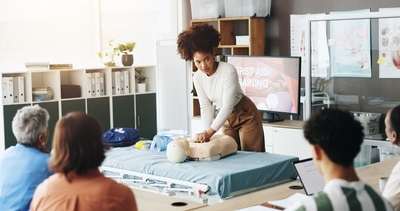 CPR, or Cardiopulmonary Resuscitation, teaches essential life-saving techniques like chest compressions and rescue breaths to help sustain blood flow and oxygen in critical situations. Most courses also cover how to properly perform CPR, including using an Automated External Defibrillator (AED) and providing first aid basics so you’re prepared to act confidently in a range of emergencies.
CPR, or Cardiopulmonary Resuscitation, teaches essential life-saving techniques like chest compressions and rescue breaths to help sustain blood flow and oxygen in critical situations. Most courses also cover how to properly perform CPR, including using an Automated External Defibrillator (AED) and providing first aid basics so you’re prepared to act confidently in a range of emergencies.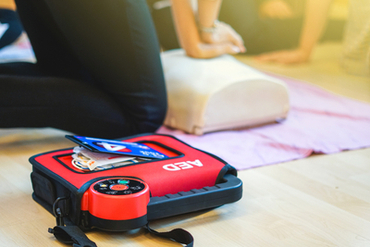 No, there is no additional cost to retake your certification exam. If you don’t pass on your first attempt, you’ll have unlimited opportunities to review your materials and retake the test at no extra charge. Your progress is saved in your account, and you’ll even receive an exam recap via email to help you focus your studying. This ensures you can build confidence at your own pace without worrying about hidden fees.
No, there is no additional cost to retake your certification exam. If you don’t pass on your first attempt, you’ll have unlimited opportunities to review your materials and retake the test at no extra charge. Your progress is saved in your account, and you’ll even receive an exam recap via email to help you focus your studying. This ensures you can build confidence at your own pace without worrying about hidden fees. Training to renew your ACLS certification is typically quicker than the initial training. Most recertification courses take 4 to 6 hours to complete, depending on how familiar you are with the material. The course focuses on updated protocols, reinforcing key skills like airway management, medication use, and rhythm recognition without re-teaching foundational concepts in full.
Training to renew your ACLS certification is typically quicker than the initial training. Most recertification courses take 4 to 6 hours to complete, depending on how familiar you are with the material. The course focuses on updated protocols, reinforcing key skills like airway management, medication use, and rhythm recognition without re-teaching foundational concepts in full.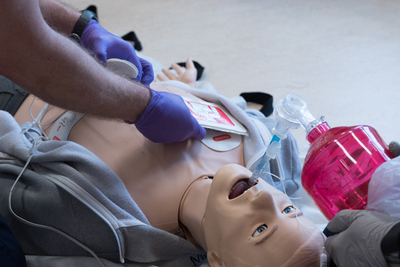 We know your days are full as you balance patient care, administrative duties, shifting protocols, and everything else that comes with working in healthcare. Keeping your ACLS certification current may feel like just another task, but it’s also a good way to stay sharp, confident, and ready when lives are on the line.
We know your days are full as you balance patient care, administrative duties, shifting protocols, and everything else that comes with working in healthcare. Keeping your ACLS certification current may feel like just another task, but it’s also a good way to stay sharp, confident, and ready when lives are on the line.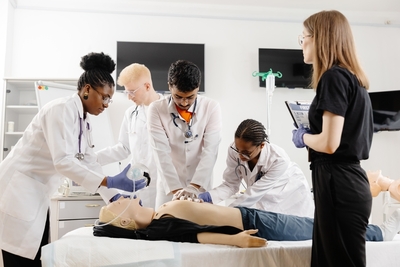 Traditional in-person ACLS classes tend to require a full day or more when you factor in travel, fixed schedules, and group instruction.
Traditional in-person ACLS classes tend to require a full day or more when you factor in travel, fixed schedules, and group instruction.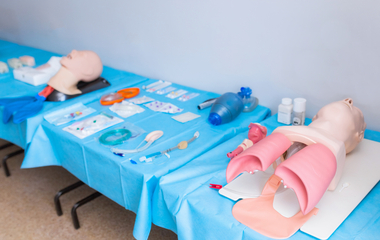
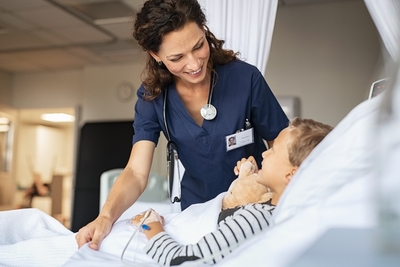 Not all nurses are required to hold a Pediatric Advanced Life Support certification. It depends largely on your role, the patient population you serve, and your clinical setting, but a PALS certification is typically required for nurses who care for infants and children in critical or emergency situations. This includes:
Not all nurses are required to hold a Pediatric Advanced Life Support certification. It depends largely on your role, the patient population you serve, and your clinical setting, but a PALS certification is typically required for nurses who care for infants and children in critical or emergency situations. This includes: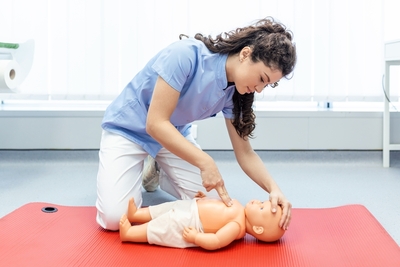 Getting your PALS certification as a nurse is a straightforward process, and it starts with selecting a course that fits your learning style and schedule. To enroll, you must already be proficient in BLS skills, particularly CPR for infants and children. While there are no formal prerequisites beyond that, it’s helpful to have experience in emergency or pediatric care, as the course builds on clinical knowledge and rapid assessment skills.
Getting your PALS certification as a nurse is a straightforward process, and it starts with selecting a course that fits your learning style and schedule. To enroll, you must already be proficient in BLS skills, particularly CPR for infants and children. While there are no formal prerequisites beyond that, it’s helpful to have experience in emergency or pediatric care, as the course builds on clinical knowledge and rapid assessment skills.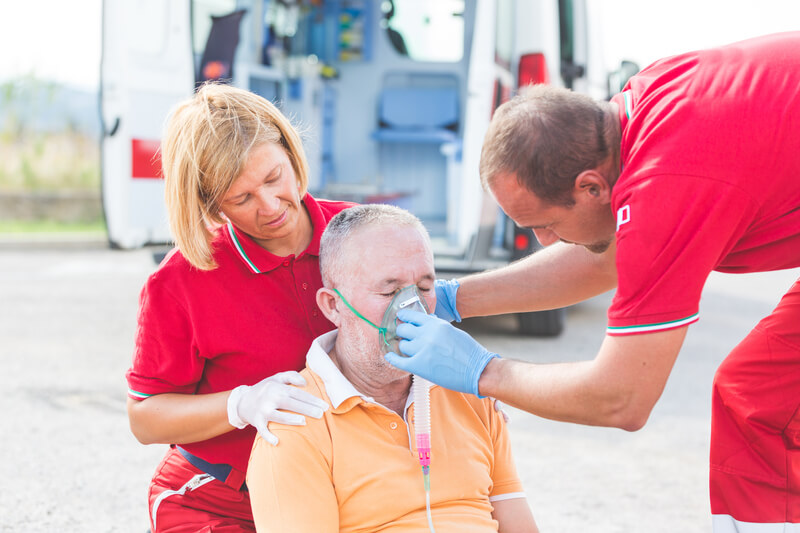 Each year, more than 350,000 cardiac arrests occur outside of hospitals
Each year, more than 350,000 cardiac arrests occur outside of hospitals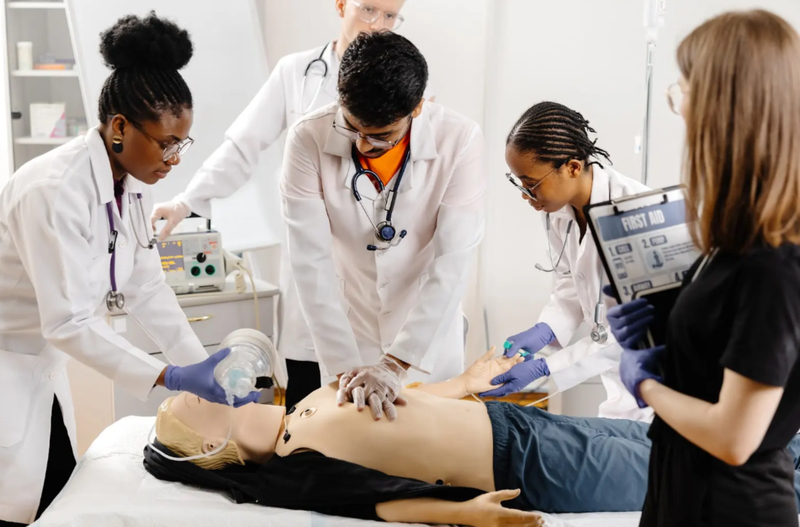 While the fundamentals of BLS are consistent, applying them effectively depends on the provider’s setting. Both prehospital and in-hospital healthcare professionals face distinct challenges that shape how they deliver care. Following best practices tailored to each environment helps reduce mortality and ensure timely, high-quality intervention.
While the fundamentals of BLS are consistent, applying them effectively depends on the provider’s setting. Both prehospital and in-hospital healthcare professionals face distinct challenges that shape how they deliver care. Following best practices tailored to each environment helps reduce mortality and ensure timely, high-quality intervention.